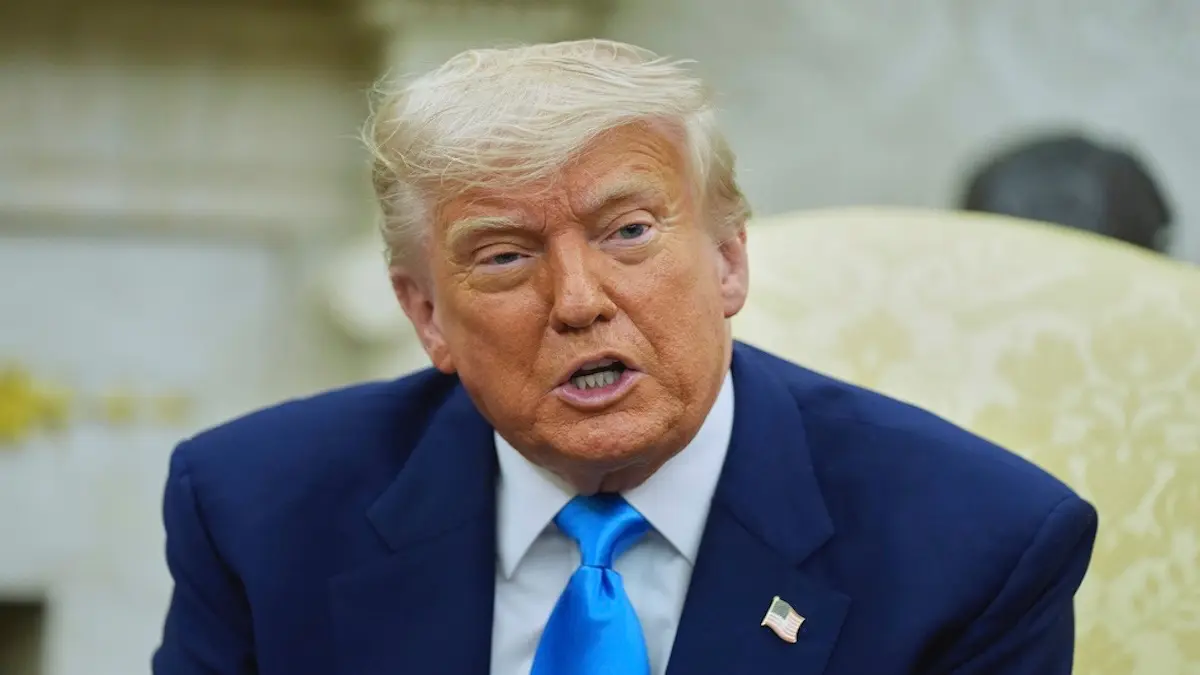Updated 4 June 2025 at 10:03 IST
Trump to Double Steel, Aluminium Import Tariffs to 50% from Wednesday; UK Exempted, Here's What We Know
US President Donald Trump has announced a steep hike in import duties on steel and aluminium, doubling existing tariffs to 50% from June 5. The decision, he says, is aimed at shielding American manufacturers from cheap foreign metal imports. The move has sparked backlash from US allies, including the European Union.
- World News
- 3 min read

Washington: In a fresh move that could trigger a global trade row, US President Donald Trump has announced that steel and aluminium imports into the United States will now face a 50% tariff, doubling the previous rate of 25%. The new tariffs come into effect from midnight, Wednesday (June 5), according to a White House proclamation released on Tuesday.
However, metal imports from the United Kingdom will remain at the existing 25% rate, owing to an earlier trade agreement between the two countries.
Why the Sudden Tariff Hike?
Trump claims the step is necessary to protect domestic industries from the adverse impact of low-cost imports. Addressing steel workers in Pennsylvania last week, the former President said, “Nobody is going to be able to steal your industry… At 25 percent, they can sort of get over that fence. At 50 percent, they can no longer get over the fence.”
He also cited national security concerns, asserting that foreign countries were dumping excess steel and aluminium at cheap rates, weakening US manufacturers. “In my judgment, the increased tariffs will more effectively counter foreign countries that continue to offload low-priced, excess steel and aluminum in the United States,” the proclamation read.
Advertisement
Industries that Could be Impacted
The hike could have a ripple effect on various sectors, especially automobile and electronics manufacturing. These industries depend heavily on imported steel and aluminium. Even household goods like refrigerators, washing machines, and tinned food items—packaged using aluminium—may become costlier.
Industry insiders warn that grocery prices could also rise, as packaging for everyday items like canned tuna, beans, and soup typically uses aluminium.
Advertisement
EU Reacts Sharply, Warns of Retaliation
Trump’s move has not gone down well with US allies, especially the European Union. Brussels has criticised the decision, calling it abrupt and damaging to ongoing trade negotiations.
In a statement, the EU said the action “undermines efforts to reach a negotiated solution” and warned that it was prepared to retaliate if the US goes ahead with the hikes.
A Deadline Looms
Trump had earlier imposed sweeping 10% tariffs on many US trade partners. These were paused as Washington entered negotiations, but the suspension expires in early July—making the next few weeks crucial for trade diplomacy.
What's Next?
Since his return to office in January, Trump has reignited trade tensions by imposing new tariffs on allies and rivals alike. Sector-specific levies, including on automobiles, are also being reviewed.
While the tariff hike is meant to shield American industries, analysts warn that it could disrupt global supply chains, strain US consumer wallets, and lead to fresh economic friction between Washington and its allies.
(With Inputs from Agencies)
Published By : Aditi Pandey
Published On: 4 June 2025 at 07:50 IST
